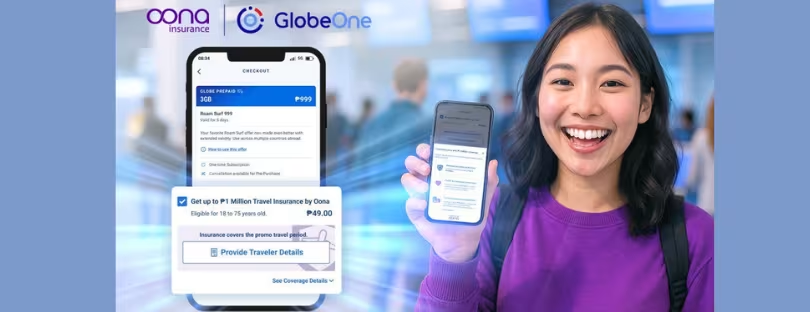
Does airplane mode use data overseas?
Should you decide to visit a foreign land, figuring out how to maintain contact with your family and friends back home becomes a priority? Your device’s connectivity to the internet, either through a mobile network or WiFi, is crucial for this communication. Otherwise, you might need to switch your phone to airplane mode. Airplane Mode and Data Usage
Airplane mode is a feature available in most recent smartphones, which turns off all wireless communications, encompassing cellular data, Wi-Fi, and Bluetooth. However, a question that often arises among users is whether airplane mode consumes data, especially when on an international trip.
In this post, we will delve into the specifics of using airplane mode, providing insights on what you should and shouldn’t do with your phone while on an international journey.
What does airplane mode mean?
Also referred to as flight mode, airplane mode is a function found in modern mobile gadgets that turns off wireless connections, such as WiFi, Bluetooth, and cellular data. However, it’s worth noting that some of the latest devices and operating systems don’t disable Bluetooth when in airplane mode. The primary use of airplane mode is during flights to adhere to regulations and avoid causing interference with the aircraft’s equipment.
Activating airplane mode means you won’t be able to utilize any internet-dependent features on your device. Nevertheless, you can still enjoy non-wireless functionalities and applications on your device, like playing games offline or listening to downloaded music.
How can I activate airplane mode? Airplane Mode and Data Usage
The process of activating airplane mode varies depending on your mobile device and its operating system.
Activating airplane mode on iPhone and iPad
To activate airplane mode on an iPhone or iPad, swipe down from the top right corner of your screen and tap the airplane mode icon. For older iOS devices with a home button, swipe upward from the screen’s bottom to access the control center. Alternatively, navigate to -> , and flip the switch to enable it.
Activating airplane mode on Android devices
To activate airplane mode on an Android gadget, swipe downward from the top of your screen to access the notification panel, then tap the airplane mode icon (which looks like an airplane). Alternatively, navigate to -> -> , and flip the switch to the “on” position.
When should I activate airplane mode?
As previously stated, airplane mode is commonly used during flights to adhere to the rules and avoid interfering with the aircraft’s equipment. However, it can also come in handy in other scenarios, such as when you want to save battery power by only using offline functionalities and apps on your devices.
Airplane mode can also be beneficial when you are in a location with weak signal strength and you don’t want your device to continually search for a connection. If you’re feeling overwhelmed and wish to avoid receiving calls, text messages, or app notifications, turning on airplane mode may be a good option. Moreover, if you want to reset your mobile network connection, you can switch on airplane mode and then switch it off after a few seconds.
Does airplane mode consume data?
Activating airplane mode cuts off all wireless communication, including cellular data. This means that while in airplane mode, your device will not use any data as it won’t be transmitting or receiving any information from the internet. Mobile devices typically use data when they send or receive information over the internet. If no data is transmitted or received, your data package won’t be depleted.
Here are some dos and don’ts when using your phone abroad
3 things to avoid doing with your phone abroad Airplane Mode and Data Usage
1. Merely activating airplane mode
While activating airplane mode can help conserve battery life and disable wireless communication, it also restricts access to useful features and information during your travel. For example, if you need to use navigation apps like Google Maps, you’ll need to deactivate airplane mode.
Moreover, if you want to use Wi-Fi for internet access, you’ll either have to turn off airplane mode or manually activate WiFi mode, as airplane mode also disables WiFi. In essence, airplane mode should only be used when on a plane or when you deliberately want to disconnect from the internet.
2. Exclusively relying on auto-roaming
Auto-roaming allows your phone to automatically connect to a supported local cellular network in another country. While this is convenient, it can be costly due to the high international roaming rates charged by many carriers. Average data prices for roaming range between €5 per MB, which is much higher compared to local cellular data rates.
3. Exclusively relying on WiFi
While using Wi-Fi can help save on data usage, it’s crucial to understand the risks associated with using public Wi-Fi networks. These networks can be insecure, putting your device at risk of hacking and data theft. Furthermore, public Wi-Fi networks may not be available everywhere or may require a password or payment to access. It’s important to have an alternative internet access plan, such as using local eSIM networks when WiFi is not accessible or trustworthy.
3 things you should do with your phone abroad
1. Ensure your phone is unlocked
Before traveling, ensure that your phone is unlocked. An unlocked phone can connect to any local carrier network in a foreign country, saving you money that would otherwise be spent on international roaming charges. You can check if your phone is unlocked by using a SIM card or eSIM of another carrier.
2. Understand how to manage data roaming settings
If you plan on using cellular data while traveling, it’s important to know how to manage your data roaming settings. Most smartphones have a feature that allows you to disable data roaming to avoid unexpected charges. This feature should be turned off if you wish to avoid high data roaming charges.
3. Plan for an international traveler data plan
If you plan on using your smartphone or other devices to access the internet in a foreign country, it’s important to choose a data plan that suits your needs and budget.
What is the best way to use data abroad?
Here are some options for staying connected when traveling.
Portable WiFi devices
These devices are small routers that create a WiFi hotspot that you can connect to with your smartphone or other devices. However, they can be expensive to purchase, and you may still have to pay for data usage beyond the limits of your plan.
Physical SIM card
SIM cards are a popular option for international travelers because they allow you to use your phone on a local network in the destination country. Using local SIM cards is a cost-effective way to stay connected, especially if you plan to make local calls or send text messages in addition to connecting to the internet. Check out the Alertify store to get some of the best SIM cards.
Auto data roaming
When using auto data roaming, your smartphone automatically connects to a local network in the destination country, allowing you to use cellular data as you would at home. While this can be a convenient option, it is usually very expensive than the other alternatives.
Traveler eSIM
eSIM is a new technology that allows you to activate a cellular plan without having to physically insert a SIM card into your device. Activating eSIM is done by downloading and installing activation software or requesting your network provider to activate it remotely. eSIMs are becoming increasingly popular among international travelers because they are easy to use and offer many advantages over traditional SIM cards, including:
- Reasonable prices: eSIMs are often priced competitively compared to traditional SIM cards, especially for data usage.
- Prepaid: eSIMs can be prepaid, so you don’t have to worry about hidden fees or unexpected charges.
- Easy to use: eSIMs can be activated quickly and easily without visiting a local store to purchase and install a physical SIM card.
- Flexibility: eSIMs can be used with multiple carriers, giving you more options for choosing the best plan for your needs.
Overall, using eSIM is the best alternative, thanks to the advantages they have over the other options we have shared. The good news is that all the popular carriers in the US and Europe support eSIM. If you plan to travel to the US, check out various plans from BNESIM to get access to some of the best eSIM data plans.
Final Thoughts about Airplane Mode and Data Usage
As discussed in this article, airplane mode is only necessary if you are on a plane or intentionally don’t want your device to connect to the internet or receive calls and texts. Consider turning it off if you want to stay connected to the internet. To use the internet in a foreign country, there are several other options available, including SIM cards, portable WiFi devices, and auto data roaming.
However, prepaid eSIM is the safest and easiest way to use data overseas, offering affordable and reliable connectivity without going through the hassle of purchasing and installing traditional SIM cards. Alertify in partnership with BNESIM offers a wide range of eSIM data plans that you can take advantage of if you intend to travel soon.
Here are some indicative prepaid eSIM card prices: eSIM Activation














